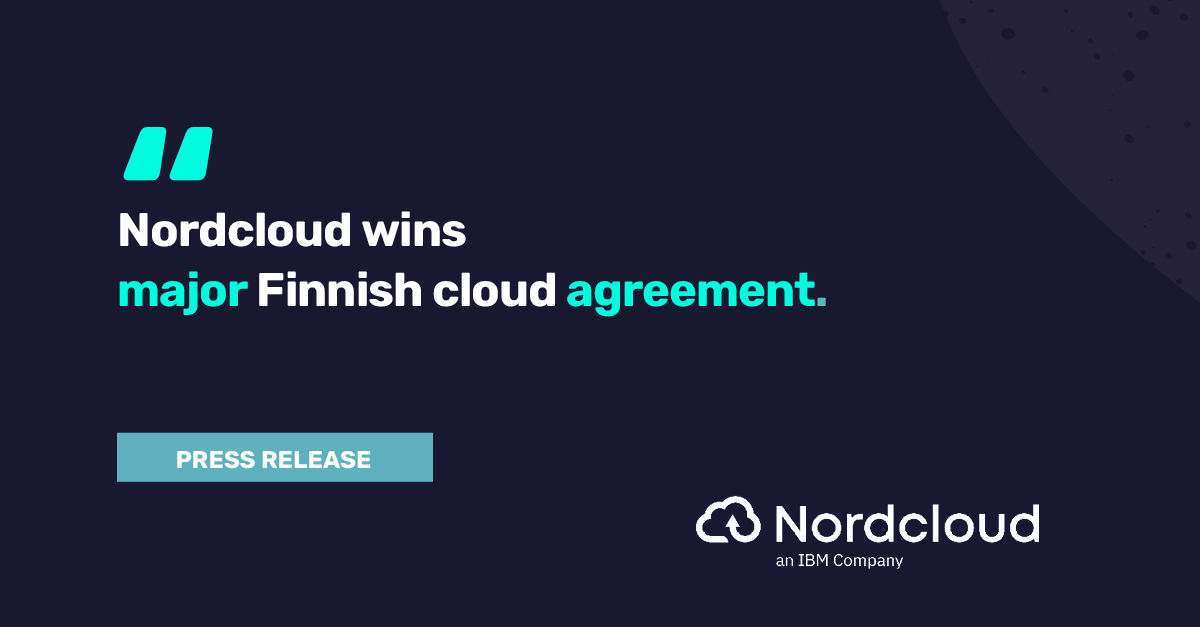
What We’ve Learnt About Government & Cloud – 6 Key Drivers
The Finnish government has advised agencies to go cloud-first where possible. And we’ve been working with a few of these agencies, helping enable this transition to cloud.
But there’s something of a lag in legislation catching up with technology. And, while legislation drags behind, there’s some confusion around what data and workloads government agencies are allowed to move to cloud.
This uncertainty has understandably led to some agencies making slow progress. So, it’s worth reminding ourselves of what’s driving the move to a cloud-first government, and how some obstacles can be resolved.
What are 3 typical drivers for moving to cloud from the organisational point of view?
Digital experiences
Changes to our behaviour and how we interact and communicate has driven modernisation across all sectors. Finnish citizens now expect quality digital experiences across the board, so public sector organisations need to deliver scalable, easy-to-use services across devices like their mobile phones.
Some agencies are already delivering great digital services, like tax authorisation or police, while others are testing and developing capabilities as we speak.
Security concerns
Security will underpin the government’s safe and secure modernisation. It’s absolutely crucial, considering the scale and sensitivity of personal data and classified information controlled across these agencies. While personal data and other classified information cannot be stored in the public cloud due to current Finnish legislation, we understand the requirements and are able to advise on the best approaches for each agency and classification.
And it’s never been more critical than it is right now. When geo-political situations arise, we’ve been helping agencies plan and execute digital evasion capabilities, ensuring their services continue to operate in the public cloud, even during crisis situations or unexpected scenarios.
Quality & reliability
Quality and reliability will always be a major concern with the scale and importance of government services. Delivering consistent, easy-to-use digital services that are reliable and maintain high availability is essential for maintaining citizen confidence and satisfaction across critical areas such as tax, healthcare, identity and transportation.
Public cloud has the capabilities to run services with minimal manual work, plus the ability to rapidly detect and mitigate failures.
And what are the 3 key drivers for moving to cloud for government IT teams?
Improving agility
There’s a drive from the government to reap the benefits of cloud, but many teams need a partner to make sure everything’s in place to be optimised, secure and with the levels of automation in place to be truly effective. Agencies that are highly advanced in developing software in the cloud might need to support specific instances to realise the speed, agility and scale they need to deliver consistent digital services to citizens.
One organisation for example developed an app, with a vendor delivering some solid cloud-native services. However, they need support with automation and security policies to be truly effective when it comes to rolling out these services in cloud.
Better integration
In some organisations, there might be old legacy data centres, with a handful of services on cloud, perhaps a few instances of Azure infrastructure in place. But this can lead to disparate, outdated systems, legacy debt, and siloed data.
So when it comes to introducing new services, delivering the data, infrastructure or security requirements needed can be a real headache. Starting with a health check and assessments and putting some corrections in place can help teams get up and running with a new, integrated cloud environment in a secure way.
Enabling security at scale
Cloud has a number of advantages when it comes to delivering security, and we work with government teams to build cloud environments that are secure-by-design. Hosting data or applications in the cloud eliminates risks posed by malfunction or downtime of physical servers or hardware, and sources of the security breach in cloud can be easily isolated and removed.
Plus, any individual failure or issue is always backed up within the architecture, thanks to instant data mirroring, so there’ll always be multiple versions of your data and applications stored on different servers.
And platforms and data hosted in the cloud can have enhanced restrictions over access, with easy to use controls and tools, including tracking data access and file sharing, time restricted access controls, and multi-factor authentication.
We can help you get started
Read our step-by-step guide to find out more
From assessment to delivery, read Julkisen Sektorin Pilvimigraatio - our easy-start guide for Finland’s public sector
Get in Touch.
Let’s discuss how we can help with your cloud journey. Our experts are standing by to talk about your migration, modernisation, development and skills challenges.







